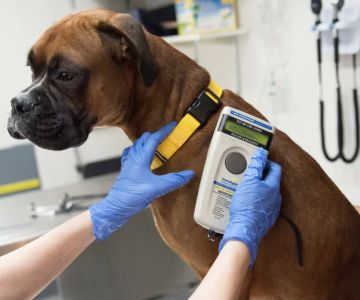- 1-Starting-Your-Journey-After-High-School
- 2-Education-Pathways-and-Preparations
- 3-Vet-School-Application-Process
- 4-Gaining-Experience-and-Skills
- 5-Real-Life-Stories-and-Professional-Insights
- 6-Taking-the-Next-Step-Toward-a-Veterinary-Career
1. Starting Your Journey After High School
Deciding how to become a veterinarian after high school is the first step in a rewarding but demanding career path. Most students who dream of becoming vets begin by focusing on their academic foundation, especially in sciences like biology, chemistry, and physics. This strong scientific background is critical because veterinary medicine relies heavily on understanding animal biology and medical principles.
After graduating high school, many aspiring vets choose to attend a college or university with a strong pre-veterinary program. This pathway helps build the necessary prerequisites required by veterinary schools. Selecting relevant coursework, such as animal science or anatomy, during this stage can provide a competitive edge.
1.1 Importance of Early Planning and Focus
Planning early can save time and effort later. For example, Emma, a recent veterinary student, credits her success to researching vet school prerequisites during her last year of high school and tailoring her college courses accordingly. This foresight allowed her to meet all requirements efficiently and reduced stress during applications.
2. Education Pathways and Preparations
The traditional route to become a veterinarian involves completing an undergraduate degree before applying to veterinary school. Many choose degrees in biology, animal science, or related fields, but the key is completing all required courses, such as organic chemistry and microbiology.
2.1 Undergraduate Degree: Building Knowledge and Experience
During undergraduate studies, students should also seek opportunities to gain hands-on experience with animals. Internships at animal clinics or volunteering at shelters not only strengthen applications but also confirm commitment to the profession.
2.2 Alternative Routes and Considerations
Some students may choose to pursue veterinary technician programs first or work in animal care roles to better understand the field before committing to vet school. While these paths take longer, they provide valuable insights and skills.
3. Vet School Application Process
Applying to veterinary school is highly competitive, requiring more than just good grades. Prospective vets must prepare thoroughly for entrance exams, like the GRE, and craft compelling personal statements.
3.1 Preparing a Strong Application
Applicants should highlight their practical experience with animals, academic achievements, and passion for veterinary medicine. Letters of recommendation from professors or veterinarians can significantly enhance an application’s strength.
3.2 Navigating Interviews and Selection
Many schools conduct interviews to assess an applicant’s communication skills and motivations. Practicing with mentors or career advisors can build confidence and help articulate a genuine passion for veterinary care.
4. Gaining Experience and Skills
Becoming a veterinarian isn’t only about education—it also requires developing practical skills and emotional resilience. Time spent shadowing veterinarians, assisting in clinics, or working with animals helps build the hands-on skills vital for success.
4.1 Building Clinical and Soft Skills
Communication and problem-solving skills are as important as medical knowledge. For instance, during her internship, Jenna learned that explaining complex medical issues in simple terms to pet owners is crucial for effective care.
4.2 Coping with Challenges in Veterinary Medicine
The profession can be emotionally demanding. Developing coping strategies early, such as peer support groups or professional counseling, is highly recommended to maintain mental health and career longevity.
5. Real-Life Stories and Professional Insights
Consider the journey of Dr. Michael, who started with a passion for animals right after high school but initially struggled with vet school admission. By gaining experience as a veterinary technician and retaking prerequisite courses, he eventually got accepted and now runs a successful veterinary clinic. His story highlights the importance of persistence and flexibility.
Another story comes from Lila, who volunteered extensively at Hidden Brook Veterinary while in college, gaining insights into daily veterinary work. This hands-on exposure helped her prepare emotionally and professionally for the rigors of vet school.
6. Taking the Next Step Toward a Veterinary Career
Once accepted to veterinary school, the journey continues with several years of intense study and clinical rotations. Throughout this time, staying connected with professional communities and resources like Hidden Brook Veterinary can provide ongoing support and access to valuable tools and products designed to assist veterinary students and professionals alike.
If you’re inspired by the idea of becoming a veterinarian after high school, investing in quality educational resources and professional guidance is essential. Explore trusted veterinary tools and services through Hidden Brook Veterinary to equip yourself for success in this fulfilling career path.











